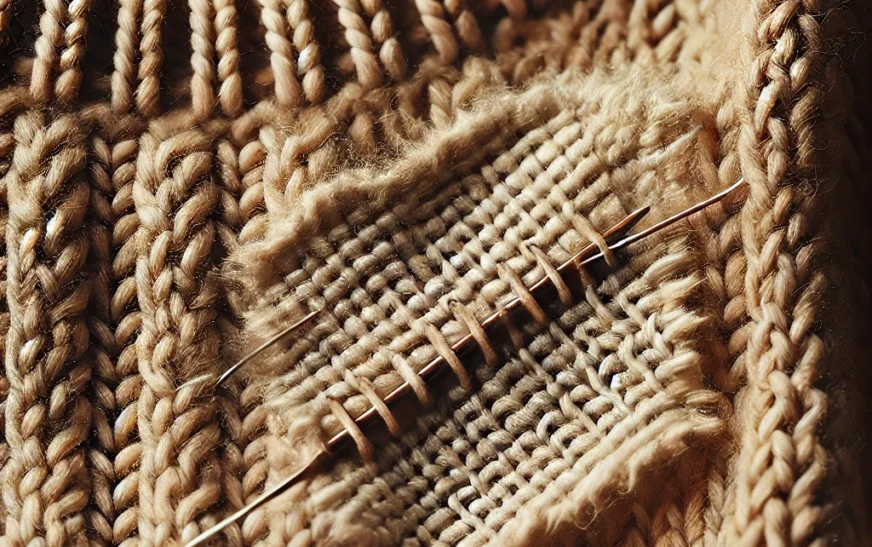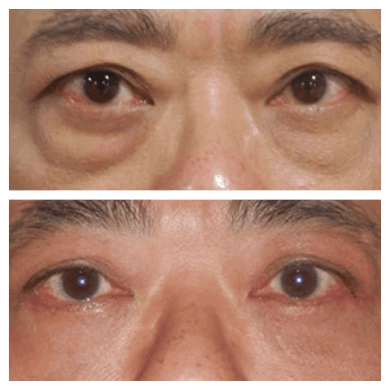Moth holes in clothes are a frustrating problem, especially when they appear in your favorite garments. These tiny holes often result from fabric moth larvae feeding on natural fibers such as wool, cashmere, silk, and cotton. Understanding why moth holes occur, how to repair them, and ways to prevent them can save your wardrobe from further damage.
This guide will delve into everything you need to know about moth holes in clothes, from identifying the culprits to repairing damaged garments and protecting your wardrobe for the future.
What Causes Moth Holes in Clothes?
Moth holes are primarily caused by two species of moths: clothes moths (Tineola bisselliella) and case-bearing moths (Tinea pellionella). These insects thrive in dark, undisturbed areas and are attracted to natural fibers. It’s not the adult moths that cause the damage but their larvae, which feed on fabrics to build their cases or cocoons.
Conditions That Encourage Moth Infestations:
- Dark, Undisturbed Spaces: Closets and storage boxes are common hotspots.
- Natural Fibers: Moths are drawn to materials like wool, cashmere, and silk.
- Food Residues: Stains or sweat can attract moths.
- Seasonal Storage: Clothes stored away for long periods are at higher risk.
How to Identify Moth Damage
To address moth holes effectively, you need to recognize the signs of an infestation:
- Tiny Holes: Small, irregular holes in fabric, often in clusters.
- Shed Larval Cases: Silky tubes or casings left behind by larvae.
- Webbing: Fine, white silk threads on the fabric surface.
- Adult Moths: Small, beige, or brown moths in or around your closet.
If you notice these signs, immediate action is crucial to prevent further damage.
How to Repair Moth Holes in Clothes
Moth holes can vary in size and severity. While minor damage can often be fixed at home, larger holes may require professional repair. Here are some methods to restore your garments:
1. Hand Stitching Small Holes
For minor moth holes, hand stitching is a simple and effective method.
Materials Needed:
- Needle and thread (matching the fabric color)
- Scissors
Steps:
- Turn the garment inside out.
- Thread the needle with matching thread.
- Use small, tight stitches to sew the edges of the hole together, closing the gap.
- Knot the thread securely and trim any excess.
This method works best for smaller holes where the fabric edges are still intact.
2. Using Iron-On Patches
For larger holes or fabrics unsuitable for stitching, iron-on patches are a quick solution.
Materials Needed:
- Iron-on patch
- Iron
Steps:
- Cut the patch to a size slightly larger than the hole.
- Place the patch over the hole on the inside of the garment.
- Use a warm iron to adhere the patch, following the manufacturer’s instructions.
Iron-on patches are especially useful for casual clothing and children’s garments but may not suit delicate or high-end fabrics.
3. Darning
Darning is a traditional repair technique ideal for sweaters, woolens, and knitwear.
Materials Needed:
- Darning needle
- Matching thread or yarn
- Darning egg or similar tool
Steps:
- Place the darning egg under the hole to provide a smooth surface.
- Thread the needle with yarn or thread matching the garment.
- Weave horizontal and vertical stitches over the hole to recreate the fabric’s structure.
Darning is a durable repair method that blends seamlessly with knitwear.
4. Invisible Mending
For high-value or delicate garments, invisible mending provides the most discreet repair.
This technique involves reweaving fibers to match the original fabric’s texture and pattern. Invisible mending is best left to professionals, especially for expensive items like suits, cashmere sweaters, or vintage clothing.
Preventing Moth Holes in Clothes
Prevention is the best way to protect your clothes from moth holes. By creating an environment that deters moths, you can safeguard your wardrobe from future damage.
1. Clean Clothes Regularly
- Wash or dry-clean clothes before storing them, as moths are attracted to food residues, sweat, and body oils.
- Pay special attention to woolen and cashmere garments.
2. Use Moth Deterrents
- Cedar: Cedar blocks, chips, or hangers repel moths naturally.
- Lavender: Lavender sachets not only smell pleasant but also deter moths.
- Mothballs: Traditional mothballs are effective but may leave a chemical odor.
3. Store Clothes Properly
- Store seasonal clothing in airtight containers or vacuum-sealed bags.
- Use breathable garment bags for delicate fabrics.
4. Regularly Inspect Closets
- Vacuum and clean closets regularly to remove larvae and eggs.
- Move clothes periodically to disturb potential hiding spots.
When to Seek Professional Help
While minor repairs and prevention can be managed at home, some situations call for professional assistance:
- Severe Damage: If moth holes are extensive or the fabric is delicate, consult a professional tailor or garment repair specialist.
- Luxury Fabrics: High-end materials like cashmere, silk, or bespoke suits require expert handling.
- Invisible Repairs: Professional invisible mending ensures seamless restoration of expensive garments.
Upcycling Clothes with Moth Holes
If some garments are beyond repair, don’t discard them! Upcycle the fabric into new items:
- Scarves or Accessories: Turn undamaged sections into stylish scarves, gloves, or headbands.
- Pillow Covers: Use the fabric to make decorative pillowcases.
- Patchwork Projects: Combine pieces to create unique quilts, bags, or wall art.
- Kids’ Crafts: Let children use the fabric for crafting projects.
Upcycling is a sustainable way to give new life to damaged clothes while reducing waste.
Why Repairing Moth Holes Matters
Repairing moth holes is about more than saving your favorite sweater. It contributes to sustainable fashion by reducing waste and promoting mindful consumption. By repairing garments instead of replacing them, you save money, preserve sentimental items, and reduce your environmental footprint.
Benefits of Repairing Moth Holes:
- Cost-Effective: Repairs are cheaper than replacements.
- Eco-Friendly: Extends the life of garments, reducing textile waste.
- Preserves Sentimental Value: Keeps cherished items wearable.
Conclusion
Moth holes in clothes may seem like a frustrating nuisance, but with the right approach, they are manageable. By understanding the causes, repairing the damage, and taking preventive measures, you can protect your wardrobe and enjoy your favorite garments for years to come.
Whether you choose DIY methods like hand stitching and darning or seek professional invisible mending, repairing moth holes is a valuable skill that aligns with sustainable fashion practices. And if some clothes are beyond saving, upcycling offers a creative way to repurpose the fabric.
Take action today to prevent and repair moth damage, and you’ll enjoy a more sustainable, cost-effective, and moth-free wardrobe!










